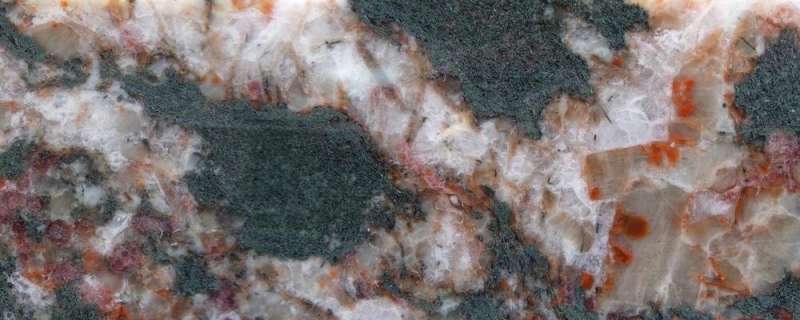New findings on the occurrence of rare earth metals outside of Grännaa

New technologies and expanding electrification mean a growing need for both common and uncommon metals, such as rare earth metals. One of Europe's largest deposits is in Norra Kärr outside of Gränna.
"Norra Kärr can help make the EU self-sufficient in rare earth metals," says Axel Sjöqvist, author of a new doctoral thesis at the University of Gothenburg.
Reliable sources of rare earth metals are required to successfully transition to green energy and for new production of wind turbines and electrical cars. Rare earth metals are used in devices like displays, catalytic converters, batteries and powerful permanent magnets.
"It is important to learn about the geological origins and development of these rock types and to identify the distribution of rare earth metals between different types of rocks and minerals. Knowing this allows us to efficiently use resources and facilitates future prospecting in Sweden and globally," says Axel Sjöqvist at the Department of Earth Sciences, University of Gothenburg.
The studies in Sjöqvist's dissertation provide new insights into Norra Kärr's geological origin.
"There is a lack of reliable sources for many metals and minerals critical for innovations. To live up to the promises of the green transition, there must be sufficient supplies of the metals used in wind turbines and electrical cars. Wind turbines can produce more electricity and electrical cars can drive longer distances thanks to rare earth metals, which are important components in electrical motors and generators."
EU imports from China
Mining and mineral extraction also present challenges for the environment. And the plans for mineral extraction outside of Gränna have led to environmental protests.
"Mining of resources always impacts the environment in some way. That impact does not disappear when we import metals. Instead, it increases from a global environmental perspective. The resources embedded in the bedrock cannot be moved, unfortunately. It is up to the Land and Environment Court to decide if the company's [Accent1] new plan for mining in Norra Kärr can be done in an environmentally sound manner."
Today, the European Union imports 98–99 percent of its demand for rare earth metals from China.
"There, they are produced in doubtful conditions for both humans and the environment. China has a global market monopoly, allowing it to control how much of these metals are available in the rest of the world. As a result, they also have an indirect control over whether the EU succeeds in achieving its sustainability promises."
More information: Ample Rare Elements: A Geochemical Anomaly in the Earth's Crust: gupea.ub.gu.se/handle/2077/69728
Provided by University of Gothenburg





















